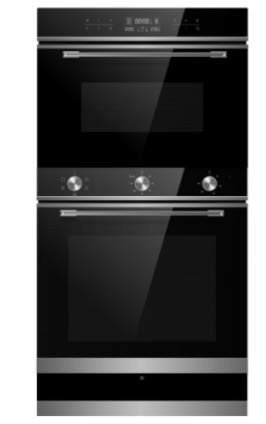Unexpected Business Strategies That Aided Cookers And Hobs To Succeed

Understanding Cookers and Hobs: A Comprehensive Guide
Cooking is an integral element of day-to-day life, and the development of kitchen appliances plays a significant role in how efficiently and efficiently people prepare their meals. Among these appliances, cookers and hobs are 2 of the most essential instruments discovered in contemporary kitchens. Built In Oven On Sale digs into the distinctions between cookers and hobs, examines their various types, and offers insights on their functions, maintenance, and selection procedure.
What are Cookers and Hobs?
Cookers
Cookers are thorough kitchen appliances developed for cooking tasks, typically integrating an oven and a hob. They can be found in different setups and types, dealing with varied cooking requirements and choices.
Hobs
Hobs, on the other hand, are more focused home appliances mostly utilized for boiling, frying, and other stovetop cooking approaches. Hobs can be standalone units or an integrated part of bigger cookers.
| Feature | Cookers | Hobs |
|---|---|---|
| Function | Integrates oven and hob | Stovetop cooking only |
| Style | All-in-one unit | Different unit or integrated |
| Types | Electric, gas, dual fuel | Gas, electric, induction |
| Installation | Enables more versatility | Built into the countertop |
| Cost Range | Normally higher | Varies commonly |
Kinds of Cookers
1. Electric Cookers
Electric cookers use electrical energy as their primary source of power. They often feature a built-in oven and multiple cooking zones on the hob.
Advantages:
- Even heat circulation
- Available in different designs (e.g., freestanding, integrated)
2. Gas Cookers
Gas cookers run on natural gas or melted petroleum gas (LPG). They provide instant heat control, making them a favorite amongst expert chefs.
Benefits:
- Instant heat adjustments
- More budget friendly operational costs
3. Double Fuel Cookers
Dual fuel cookers combine the heat of gas with the efficiency of electric ovens. This setup enables the best of both worlds, offering control and consistent outcomes.
Benefits:
- Flexible cooking alternatives
- Precise control over stovetop cooking and baking
4. Range Cookers
Range cookers are bigger and more powerful than basic cookers, featuring several ovens and hobs for substantial cooking tasks.
Benefits:
- Ideal for large households or cooking for events
- Uses various cooking choices in one appliance
Kinds of Hobs
1. Gas Hobs
Gas hobs are preferred for their fast heating and strong flame, making them exceptional for burning and stir-frying.
Advantages:
- Instant heat and control
- Suitable with any kind of cookware
2. Electric Hobs
Electric hobs warm up using electric coils or glass-ceramic surface areas, providing a contemporary look and efficient cooking.
Advantages:
- Easier to clean up
- Consistent surface area appropriate for various pots and pans
3. Induction Hobs
Induction hobs use magnetic fields to heat pots and pans straight, providing fast and energy-efficient cooking.
Advantages:
- Safe (cool surface area after eliminating cookware)
- Energy-efficient and precise
4. Strong Plate Hobs
These standard hobs utilize solid electric plates that warm up slowly.
Advantages:
- Rugged and long lasting
- Typically more economical than other types
Key Features to Consider
When selecting a cooker or hob, several functions need to be considered:
- Size and Space: Consider the size of your kitchen and the amount of work area needed.
- Cooking Style: Choose based upon preference-- gas for control, induction for performance, etc.
- Effectiveness Ratings: Look for energy-efficient models to lower energy bills.
- Reduce of Cleaning: Smooth surface areas help with easy upkeep.
- Safety Features: Automatic shutoff, flame failure devices, and child locks boost security.
Maintenance Tips
Preserving cookers and hobs lengthens their lifespan and makes sure safe operations.
- Routine Cleaning: Wipe down surface areas after use to avoid accumulation.
- Check Seals: Check oven door seals routinely for wear and tear to preserve effectiveness.
- Service Regularly: Schedule expert servicing at least once a year.
- Appropriate Cookware: Use cookware appropriate for your hob type to prevent damage.
Regularly Asked Questions (FAQs)
What is the distinction in between a cooker and a hob?
A cooker integrates an oven and hob in one unit, while a hob is usually a standalone home appliance for stovetop cooking.
Do I need a professional to set up a gas cooker or hob?
Yes, professional installation is recommended for gas home appliances to guarantee security and compliance with local guidelines.
Can I use any kind of pots and pans on induction hobs?
Induction hobs require magnetic cookware. Stainless steel or cast iron pots work best. Non-magnetic products will not warm up.
Are electric cookers more energy-efficient than gas cookers?
While both have benefits, electric cookers tend to be more energy-efficient total, specifically with contemporary, high-efficiency models.
How often should I clean my cooker or hob?
It is best to clean them after each use and perform an extensive cleaning weekly to prevent buildup and residue.
Understanding the differences, functions, types, and upkeep tips for cookers and hobs is necessary for any home cook. By selecting the best appliance suited to their culinary requirements, users can enhance their cooking experience, making meal preparation an efficient and satisfying chore. Whether going with the instantaneous control of gas or the smooth efficiency of induction, selecting the suitable cooker or hob can result in a notably improved kitchen experience.

